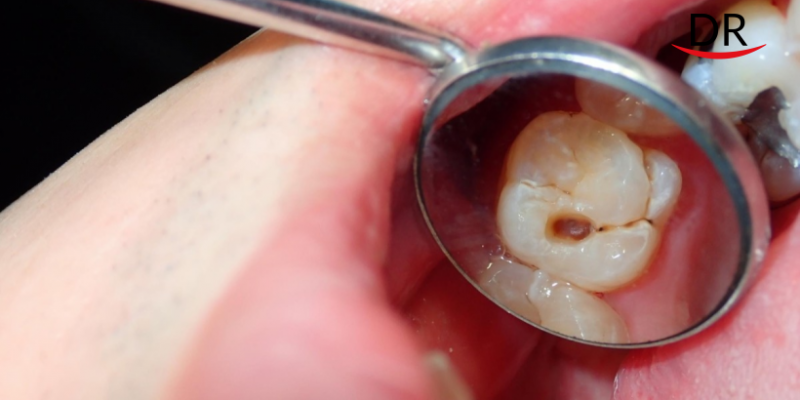Oral bacteria are ready to act as soon as the dental hygienist has finished removing plaque from the patient's teeth. Eating sugar or other carbohydrates causes bacteria to quickly repair this tough and sticky biofilm and produce acids that eat away at tooth enamel, leading to tooth decay. Scientists report that they have found a new way to prevent caries, preventing the formation of bacterial films, which consists in applying a composition with nanoparticles of cerium oxide to the surface of the teeth in the dentist's chair.
“There are over 700 kinds of bacteria in the mouth. Among them there are also beneficial bacteria that facilitate the digestion of food, or act against pathogens. In addition to beneficial microorganisms, there are also harmful bacteria of the streptococcus group, for example, Streptococcus mutans. Soon after cleaning, these bacteria easily adhere to the enamel and begin to multiply, forming biofilms. They use sugars and carbohydrates as a source of energy and a building block, and as a result of their vital activity, a dense plaque forms on the teeth that cannot be easily removed with a brush. As bacteria continue to metabolise sugar, they produce acidic byproducts that dissolve tooth enamel, opening the door to tooth decay, ”says Russell Pesavento MD and chief research director.
Various types of dental products are used to combat this problem, such as stannous fluoride to reduce plaque formation, and silver nitrate or silver fluoride diamine to stop existing tooth decay. Researchers also looked at zinc oxide, copper oxide and silver oxide to fight oral infections. According to them, despite their use of these compounds in dentistry, their repeated use can lead to both staining of enamel and bacterial resistance. “In addition, these compounds do not act selectively and therefore destroy many types of bacteria, including beneficial ones,” he explains.
Therefore, researchers were looking for an alternative that would not indiscriminately kill bacteria in the mouth and that would help prevent tooth decay rather than treat it. They decided to turn to cerium oxide nanoparticles. In other works, their effect on pathogens has already been described, but only a few have studied their work in conditions close to natural. Those who did this created their nanoparticles using redox reactions, pH precipitation reactions, or purchased compounds from suppliers. As a result, they either had no effect or even promoted biofilm growth in laboratory tests.
But Pesavento insisted, because the properties and behavior of nanoparticles depend, at least in part, on how they are created. His team produced their nanoparticles by dissolving cerium and ammonium nitrate or sulfate salts in water. Other researchers have previously created particles in a similar manner, but have not tested their effect on biofilms.
When the researchers inoculated polystyrene plates with S.mutans in a culture medium and fed the bacteria sugar in the presence of a solution of nanoparticles of cerium oxide, they found that the compound reduced biofilm growth by 40% compared to plates without nanoparticles. Under similar conditions, silver nitrate, a known anti-caries agent used by dentists, had no effect on biofilm growth.
“The advantage of our treatments is that they do not have a pronounced bactericidal effect against microorganisms in the oral cavity,” says Pesavento. Instead, the nanoparticles simply prevented microbes from adhering to polystyrene surfaces, preventing films from forming. In addition, the toxicity and metabolic effects of nanoparticles on cells in the human oral cavity were less than that of silver nitrate, ”the authors say.
In July, Dr Pesavento was granted a patent for a technology for the production of cerium oxide nanoparticles. He plans to combine nanoparticles with enamel-strengthening fluoride to create a varnish that dentists could apply to a patient's teeth. But for this, to implement this work, a lot of work must be done. The team is currently experimenting with different varnish formulations to stabilise the nanoparticles in a neutral or slightly alkaline acidic environment – one that is closer to the acidity of saliva than the current solution. In parallel, his team is testing the effect of solutions with different compositions of nanoparticles on different strains of oral bacteria. In doing so, they will test the effect of cerium particles on cells in the lower gastrointestinal tract to confirm the safety of the product being developed.
Source: www.sciencedaily.com




















Comments